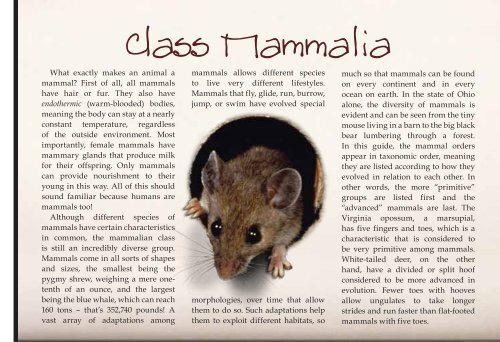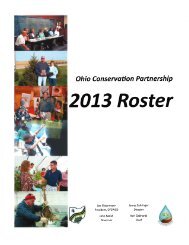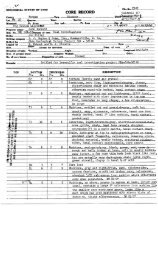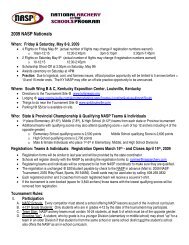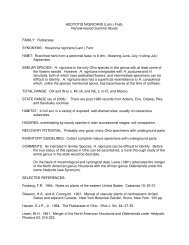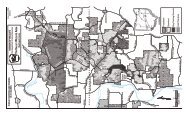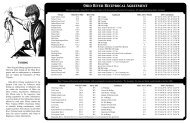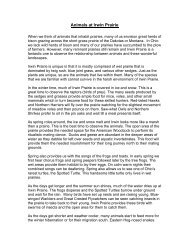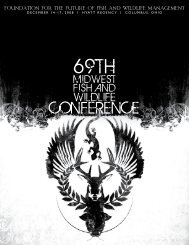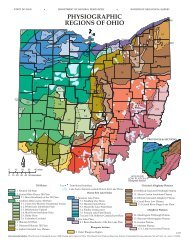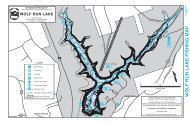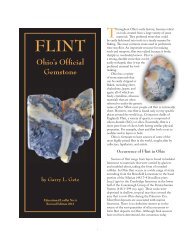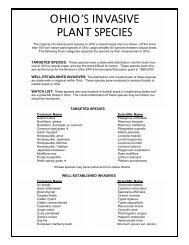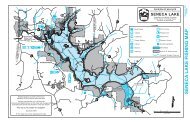MAMMALS OF OHIO f i e l d g u i d e
MAMMALS OF OHIO f i e l d g u i d e
MAMMALS OF OHIO f i e l d g u i d e
You also want an ePaper? Increase the reach of your titles
YUMPU automatically turns print PDFs into web optimized ePapers that Google loves.
What exactly makes an animal a<br />
mammal? First of all, all mammals<br />
have hair or fur. They also have<br />
endothermic (warm-blooded) bodies,<br />
meaning the body can stay at a nearly<br />
constant temperature, regardless<br />
of the outside environment. Most<br />
importantly, female mammals have<br />
mammary glands that produce milk<br />
for their offspring. Only mammals<br />
can provide nourishment to their<br />
young in this way. All of this should<br />
sound familiar because humans are<br />
mammals too!<br />
Although different species of<br />
mammals have certain characteristics<br />
in common, the mammalian class<br />
is still an incredibly diverse group.<br />
Mammals come in all sorts of shapes<br />
and sizes, the smallest being the<br />
pygmy shrew, weighing a mere onetenth<br />
of an ounce, and the largest<br />
being the blue whale, which can reach<br />
160 tons – that’s 352,740 pounds! A<br />
vast array of adaptations among<br />
Class Mammalia<br />
mammals allows different species<br />
to live very different lifestyles.<br />
Mammals that fly, glide, run, burrow,<br />
jump, or swim have evolved special<br />
morphologies, over time that allow<br />
them to do so. Such adaptations help<br />
them to exploit different habitats, so<br />
much so that mammals can be found<br />
on every continent and in every<br />
ocean on earth. In the state of Ohio<br />
alone, the diversity of mammals is<br />
evident and can be seen from the tiny<br />
mouse living in a barn to the big black<br />
bear lumbering through a forest.<br />
In this guide, the mammal orders<br />
appear in taxonomic order, meaning<br />
they are listed according to how they<br />
evolved in relation to each other. In<br />
other words, the more “primitive”<br />
groups are listed first and the<br />
“advanced” mammals are last. The<br />
Virginia opossum, a marsupial,<br />
has five fingers and toes, which is a<br />
characteristic that is considered to<br />
be very primitive among mammals.<br />
White-tailed deer, on the other<br />
hand, have a divided or split hoof<br />
considered to be more advanced in<br />
evolution. Fewer toes with hooves<br />
allow ungulates to take longer<br />
strides and run faster than flat-footed<br />
mammals with five toes.


